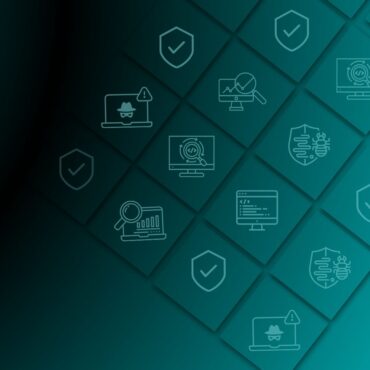
By: Elías Cedillo Hernández
CEO and Founder of GrupoBeIT, BuroMC, and Elite Infrastructure Services
The next generation of Field Services promises a more convenient future for both customers and employees thanks to the flexibility offered by the current 2.0 version of this service. Companies will be able to have fixed, floating, or part-time engineers through economies of scale and proper logistics.
Here’s how I’m going to present it, because transparency is fundamental. Additionally, I’ll use numerous examples to make sure the point is clear throughout this article. For instance, there are locations like Oxxo, which has around 12, 000 to 14, 000 stores in Mexico. I don’t think all the stores need support all the time, which would be very costly for them. That’s why they choose to hire companies that offer technical support for situations like: “the computer broke down,” “a cable stopped working,” “the camera malfunctioned". Those companies, which don’t rely solely on Oxxo for business, also work with Grupo Bimbo or Femsa, forming part of a shared ecosystem.
The topic of remote support changes the game by generating direct savings for clients. This is where, as consultants, we need to ask ourselves: to what extent can we use technology to provide remote support? Nowadays, it might not even be necessary to physically go to a site or location, as in the Oxxo example. A large portion of that support can be done remotely. In fact, this is one of the aspects we currently focus on at Grupo BeIT and its business units.
Let me tell you, this is real, but how real? Yes! Within people lies awareness or knowledge. What does this mean? It means being able to provide the client with best practices, compliance, policies, among others, based on a baseline of compliance, observing where it is headed—whether toward policy perspectives, technology, and/or people. Let’s look at it this way: a policy directed at people might be that you cannot disrespect anyone, you can’t show up to work intoxicated, you can’t steal anything, you can’t change credentials, you can’t register on someone else’s behalf—that’s clear! But what about technology? What could it be? Well, not connecting a computer that doesn’t have patches, or software, or cracking a program, or lacking antivirus or all the necessary controls to prevent your company’s or business’s assets from getting compromised.
Now, let’s focus on the technology side. Within this, there are many topics, but let’s concentrate on technical support, since it’s always necessary to implement management: asset management. And I emphasize that all of this must be done from an administrative, security, visibility, and support perspective.
At this point, tools become essential. In the company I lead, we decided to implement a tool called VICARIUS. Although there are other brands, this is one of the tools we currently use. Imagine providing support to a company that has 12, 000 computers but no idea where they are located. Some of these computers might be old, stored away in boxes or archives, and some might not have even been connected yet. Therefore, within this context, it’s necessary to have active directory management, where users and computing devices are controlled, following a standardization (homologation) concept.
Let’s go back to the examples: A company has 12, 000 computers, but recently another 500 were found, whose location was unknown until now. No one was aware of their existence. The lack of proper asset management clearly harms operations and leads to losses. Our proposal consists of establishing asset management through a series of clearly defined steps. To move from one point to another, as mentioned earlier, a process of standardization or homologation is necessary.
What can we say about this service? It is a service that raises the level of seriousness required for technical support needed in Oxxos, Burger Kings, banks, and all their branches, as well as distribution centers of companies like Femsa, Bimbo, among others. And why is it necessary? Because all these large businesses have access points, cabling, and other issues that require this service. Even consider this scenario: wouldn’t it be extremely costly for a company to have a support engineer at every branch who might have a lot of free time without doing anything? That is why it is always ideal to rely on the services I mentioned earlier.
Now, what is the trend or what is the offering we are providing at GrupoBeIT and its business units? We are offering a solution where we safeguard the most vulnerable foundation of IT support—those who have access, or could have access, to sensitive information such as the CFO’s financial statements, strategic information of an artist, or even personal data that could be used to kidnap an executive. Everything I have exemplified earlier, along with this, is summed up in Field Services 2.0.
Technological Integration and Service Effectiveness
How do companies currently measure technical support? I define the state of the art regarding this question as focusing on minimizing consumption; however, it is crucial that everything is kept in balance. This involves a significant effort because, at the end of the day, companies must take care of technical support, ensuring proper classification and the delivery of quality services.
Why? Because we could address many more issues without relying on phrases like “give the engineer time to arrive and fix the problem.” Nowadays, it is possible to carry out this process remotely. That’s why classification is fundamental, as it defines how the customer will be served. This aspect is essential because it will also involve using Artificial Intelligence to automatically resolve these types of needs. Additionally, once classified, everything must go through a training process where people are made aware of the organization’s policies regarding this matter to provide the best service.
We must take into account best practices along with effectiveness. These practices are reflected in a baseline that consists of meeting the specific characteristics of a project. For example, a baseline may specify that computers must have a particular operating system, a certain update, a specific version, and designated security software, as well as comply with certain protocols—all in line with regulatory and legal compliance within the technological scope. Regarding people, the baseline may include that the engineer must wear the corporate shirt, always have the badge visible and registered, with an active social security number and check-in record in the mornings.
To maintain control, companies must remember the importance of not neglecting certain aspects. An illustrative example is when “Juanita” connects to a computer that lacks protection and is infected with ransomware. This situation results in the spread of malware, affecting nearly 70 distribution centers in just four hours, leaving them inoperative for two weeks. It is clear that this is key, but sometimes it is overlooked. Therefore, in the context of Field Services 2.0, it is essential to remember the importance of not neglecting the collaborating personnel involved in technological initiatives.
In this regard, it is essential to have clear knowledge about the specific personnel responsible for addressing each aspect. It is evident that a full understanding of the environment and its users is needed. I need to know how many computers and mobile phones are in use, as well as whether there is any ‘hacker’ phone within the organization that could be compromising information security or introducing unauthorized content into the devices. Additionally, I need to ensure that excessive bandwidth is not being consumed due to unauthorized video streaming or other activities that could affect operations and, above all, the company’s information.
This is key to remember and to have a comprehensive view of the landscape from both hardware and software perspectives. Once you have the above and reach a standardization where everything is relatively uniform, then you can automate processes, such as allowing personnel to update their computers only when required, or restricting access to applications that undermine their productivity and efficiency. Or to prevent a virus caused by an employee insisting on installing software to watch movies or to crack Netflix. Or that a member of a certain company is authorized to access the inventory system from eight in the morning to five in the afternoon, but not at two in the morning. Basically, it’s about following a computing profile, taking into account the users’ needs/characteristics/requirements, deciding who is granted certain access and who is not, while defining whether it is safe or not.
What is our competitive advantage in this?
Many support companies don’t understand cybersecurity; they have no idea what ‘Zero Trust Network Access’ is, nor do they know about asset management — many only handle tickets. We don’t stop there. We know and understand these issues to manage them effectively, always keeping training in mind. That’s why, as I mentioned at the beginning of this article, awareness is crucial. Ideally, we continuously raise awareness both among the technical support staff, to keep them aligned, and among users — like an Oxxo cashier, a Burger King cashier, or bank branch account executives — so they know the procedures and can, for example, access a platform to track their tickets and receive remote support when an incident occurs.
Field Services 2.0 also represents the integration of people, culture, management, and automated security. Engineers are not always required to fully understand the needs of these companies and many others. Our promise is that, year after year, our prospects and clients will experience increased agility in support. For example, the issue of someone with a defective computer that used to leave them inactive for two weeks will now receive a remote response within two or three days to get them back up and running. This is just one initial scenario.
The second scenario, regarding agility, is that by having an inventory and everything automated, problems will decrease, measured by two parameters. The first parameter is productivity. Employees will be more productive by encountering fewer issues while receiving a much more timely response, because they won’t have to wait on-site for the engineer to arrive.
The other parameter is cost savings, because obviously fewer engineers will be needed simultaneously as support becomes centralized. That’s the promise: paying less since fewer professionals are involved in the technology process. For each client requiring field support services that aren’t too expensive, with interesting projects that create jobs for many people and that, through both personnel and technology, streamline or improve the efficiency of technology use in companies.
In summary, the evolution towards Field Services 2.0 represents a fundamental shift in how technical support and related services are delivered in the business world, embodying a commitment to continuous improvement and the provision of quality service with a fair cost-benefit ratio that drives the success of organizations in the digital age.











Post comments (0)